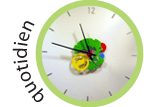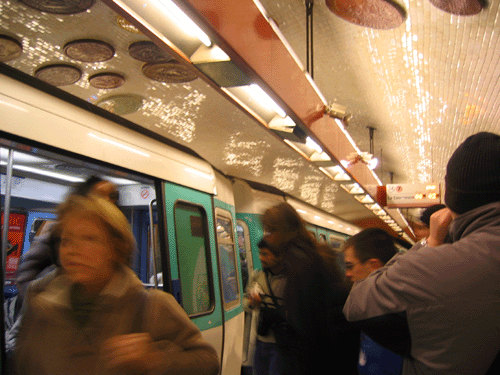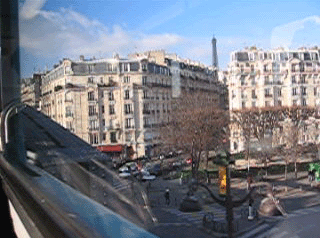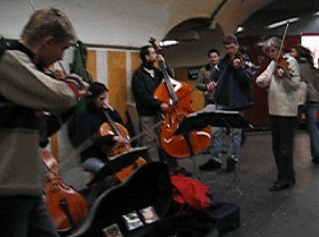














Le Métro
First opened on July 19, 1900 with the present day line 1 (Porte de Vincennes to Porte Maillot and La Défense), Paris' metro system is a really efficient way of getting around. The trains are super fast and the stations are relatively clean. Although there are 14 lines altogether, there is very little confusion when it comes to switching lines and utilizing the metro because each direction is clearly marked. Also, there is not much of a wait between trains, and the self-service doors are pretty neat. You can get off the train quicker since you operate the door right when you need to get off, and getting onto the train is faster too. No time wasted waiting for the doors to automatically open/close!
The metro is mostly underground, but there are a few open-air stations.
Notably, line 6 (Charles de Gaulle–Etoile to Nation) travels above
ground for quite some time, affording the rider a great view of the city
from the swiftly-moving train.
Carrie's favorite part of the metro: the musicians who perform in the stations.
It isn't unusual to come across a 16-member ensemble playing a famous
classical piece, right in front of the trains! If you frequent
Châtelet, a busy station where many metro lines intersect, you might
come across a scene like this...
Weekly passes which come with La Carte Orange (an orange ID card) and a metro ticket cost 14.50 euros for zones 1 and 2, and will get you most anywhere in Paris. The weekly passes go from Monday through Sunday, so a new one should be purchased on the Monday of each week, and the Carte Orange/weekly pass allows you to not only use the metro, but also the RER and buses. Packs of 10 single use tickets are also sold for 10 euros, and a day pass can be bought for 5.20 euros. The entire metro system consists of 199 km (124 miles) of tracks and 368 stations, 87 of which serve as interchanges between lines. There is at least one metro station within 500 meters of any building in Paris, and around 6 million people ride the metro each day. In 1999, the metro was made up of 3500 cars and 15,000 employees. In general, the public transportation system of Paris is very impressive. The ease, quality, and speed of Paris' public transportation make traveling in and around Paris the very least of your worries. |







